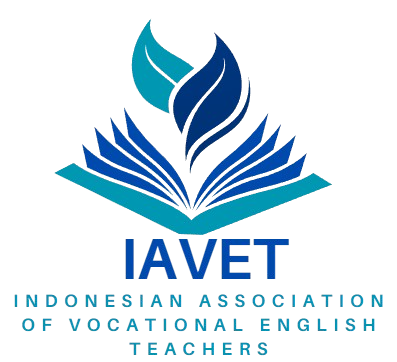Utilizing Animated Videos to Improve Listening Abilities in English Language Instruction
DOI:
https://doi.org/10.31963/rial-ej.v1i2.4258Abstract
This study examined the impact of utilizing animated videos on students' listening skills and their perceptions of this instructional approach. An investigation was conducted using a quasi-experimental pre-test and post-test design, which included a control group. Data was collected by means of listening tests and questionnaires. The participants, comprising 30 students from the ninth grade, were selected using cluster random sampling. Quantitative data analysis was performed using IBM SPSS 20.0. The results indicated a notable distinction in the listening abilities of students in the experimental class when compared to their counterparts in the control class. The two-tailed significance difference yielded a result of 0.006, which is below the alpha level of 0.05. Consequently, The research hypothesis (H1) was corroborated, and the null hypothesis (H0) was invalidated. Additionally, the questionnaire findings demonstrated that students had a favorable perception of integrating animated videos into English language learning, especially in improving their listening abilities. To summarize, utilizing animated videos effectively enhances students' listening skills and is positively regarded as a teaching approach.References
Adnan, M. (2017). Perceptions of senior-year ELT students for flipped classroom: a materials development course. Computer Assisted Language Learning, 30(3), 204–222. https://doi.org/10.1080/09588221.2017.1301958
Ainsworth, S. (2008). The Educational Value of Multiple-representations When Learning Complex Scientific Concepts. Nottingham University Journal, 191-208.
Anandapong, S. (2011). A study of English listening problems and listening proficiency of business students at Bangkok University. Language Institute, Thammasat University.
Anas, I., Basri, M., Musdariah, A., & Anas, R. (2021). Teaching speaking online using digital mind mapping software (DMMS) and screen recording tool (SRT): A practical method. 18th International Conference of the Asia Association of Computer-Assisted Language Learning (AsiaCALL–2-2021), 621, 182–187.
Aref, E. J., & Adnan, A. (2013). The Use of Dictogloss Method in Teaching Listening. Journal of English Language Teaching, 2(1), 51–58.
Arikunto, S. (2013). Prosedur Penelitian Suatu Pendekatan Praktik. Jakarta: PT. Rineka Cipta.
Brown, H. D. (2000). Principles of language learning and teaching (Vol. 4). Longman New York.
Brown, H. D. (2001). Teaching by Principles an Interactive Approach to Language Pedagogy. New York: Addison Wesley Longman Inc.
Cakir, I. (2006). The use of video as an audio-visual material in foreign language teaching classroom. Turkish Online Journal of Educational Technology-TOJET, 5(4), 67–72.
Cinemags. (2004). The making of animation: Homeland. Megindo Tunggal Sejahtera.
Creswell, J. W. (2014). Research design: qualitative, quantitative, and mixed methods approaches (4th ed.). SAGE.
Cubalit, A. N. (2016). Listening comprehension problems of Thai English learners. Proceedings of the Third International Conference on Language, Literature & Society, 207–214.
Elyas, T., & Alghofaili, N. M. (2019). Native English Speakers Versus Non-Native English Speakers: the Impact of Language Teachers on Efl Learner’S English Proficiency. English Review: Journal of English Education, 7(2), 27. https://doi.org/10.25134/erjee.v7i2.1773
Furoidah. (2009). Animasi Sebagai Media Pembelajaran. Surabaya: Mentari Pustaka.
Handajani, E. (2018). Penggunaan Teknik Dictogloss Untuk Meningkatkan Kemampuan Mendengarkan Siswa. Jurnal Pendidikan, 6(1), 31–35.
Howatt, A., & Dakin, J. (1974). Language Laboratory Material, Techniques in Applied Linguistics. Oxford University Press.
Imam. (2020). Cluster Random Sampling dan Teknik Sampling Lainnya, Lengkap dengan Contoh. Retrieved March 29, 2022, from https://www.99.co/id/panduan/cluster-random-sampling-adalah
Krashen, S. (2013). Second Language Acquisition: Theory, Applications, and Some Conjectures. In Second Language Acquisition: Theory, Applications and Some Conjectures (p. 20). Cambridge University Press. http://www.sdkrashen.com/content/articles/krashen_sla.pdf
Li, G. (2017). Preparing Culturally and Linguistically Competent Teachers for English as an International Language Education. TESOL Journal, 8(2), 250–276. https://doi.org/10.1002/tesj.322
Mann, S., Crichton, R., & Edmett, A. (2020). Evaluating the role of video in supporting re fl ection beyond INSET. System, 90, 102195. https://doi.org/10.1016/j.system.2019.102195
Nation, I. S. P., & Newton, J. M. (2009). Teaching ESL/EFL Listening and Speaking. In Teaching ESL/EFL Listening and Speaking. Routledge:Taylor & Francis Group. https://doi.org/10.4324/9780429203114
Oktarini, D., Jamaluddin, J., & Bachtiar, I. (2014). Efektivitas Media Animasi terhadap Hasil Belajar Biologi Siswa SMPN 2 Kediri. Prisma Sains: Jurnal Pengkajian Ilmu Dan Pembelajaran Matematika Dan IPA IKIP Mataram, 2(1), 1–7.
Pierce, L. (1998). Teaching Strategies for Developing Oral Language Skill. English Teaching Forum, 26, 13–18.
Pratiwi, K., & Andriyanti, E. (2019). External Factors Causing Students’ Difficulties in Listening. Journal of English Language Teaching and Linguistics, 4(2), 227–238.
Qiong, O. U. (2017). A brief introduction to perception. Studies in Literature and Language, 15(4), 18–28. https://doi.org/10.3968/10055
Richards, J. C. (2008). Teaching listening and speaking: from theory to practice. Cambridge University Press.
Rahmawati, A. E. (2010). The Use of Coca-Cola Advertisement Video in Teaching Listening Comprehension for Senior High School (An Experimental Study of the First Year of Tuna Daksa Students at YPAC (Yayasan Pembinaan Anak Cacat) Tlogorejo). Final Project. English Department, Faculty of Languages and Arts, Semarang State University.
Rost, M. (2011). Teaching and researching: Listening (ed.). Harlow: Pearson Education.
Straker, D. (2014). Changing Minds. Retrieved January 20, 2022, from http://changingminds.org/techniques/listening/typelistening.htm
Tanjung, I. F. (2016). Guru dan Strategi Inkuiri Dalam Pembelajaran Biologi. Jurnal Tarbiyah, 23(1).
Tyagi, B. (2013). Listening: An important skill and its various aspects. The Criterion An International Journal in English, 12(1), 1–8.
Van Dozer, C. (1997). Improving ESL learners’ listening skills: At the workplace and beyond. Center for Applied Linguistics.
Walgito, B. (2003). Psikologi Sosial Suatu Pengantar. Yogyakarta: Andi Offset.
Zacharias, N. T., & Manara, C. (2013). Contextualizing the pedagogy of English as an international language: issues and tensions. Cambridge Scholars Publishing.
Downloads
Published
Issue
Section
License
Copyright (c) 2023 Research and Innovation in Applied Linguistics-Electronic Journal

This work is licensed under a Creative Commons Attribution-ShareAlike 4.0 International License.
Authors who publish with this journal agree to the following terms:
Authors who submit article to this journal, agree to grant the copyright to Research and Innovation in Applied Linguistics (RIAL) under a Creative Commons Attribution License: Creative Commons Attribution-ShareAlike 4.0 International License.
![]()
For collaborative works, authors should ensure that they have secured the necessary permissions from co-authors to submit the manuscript and grant the rights outlined in this policy.
Archiving and Access:
RIAL upholds an open access policy, ensuring that articles are freely accessible to a global audience upon publication. Authors' work will be archived electronically, facilitating its long-term availability and visibility.







.png)
